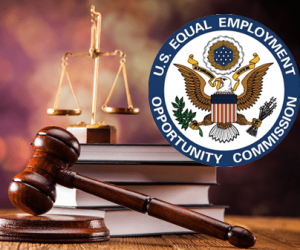 Our healthcare and business law firm represents healthcare practitioners, including physicians, mid-level providers, and chiropractors, who are faced with adverse actions from the Centers for Medicare and Medicaid Services (“CMS”) or the relevant Medicare Administrative Contractor (“MAC”). Once such adverse action is placing an individual or entity on the CMS Preclusion List, which is a list of individuals and entities who are not allowed to receive payment for services provided to Medicare beneficiaries enrolled in Medicare Advantage plans, as well as for Part D prescription drugs prescribed. This is distinct from CMS’s Exclusion List. CMS can place individuals and entities on the CMS preclusion list for many reasons specified in 42 C.F.R. 422.2, and, for individual suppliers, 42 C.F.R. § 423.100. If you would like to discuss appealing an adverse CMS decision, including a decision to add an individual or entity to the Preclusion List, you may contact our healthcare and business law firm at (404) 685-1662 (Atlanta) or (706) 722-7886 (Augusta), or by email, info@littlehealthlaw.com. You may also learn more about our law firm by visiting www.littlehealthlaw.com.
Our healthcare and business law firm represents healthcare practitioners, including physicians, mid-level providers, and chiropractors, who are faced with adverse actions from the Centers for Medicare and Medicaid Services (“CMS”) or the relevant Medicare Administrative Contractor (“MAC”). Once such adverse action is placing an individual or entity on the CMS Preclusion List, which is a list of individuals and entities who are not allowed to receive payment for services provided to Medicare beneficiaries enrolled in Medicare Advantage plans, as well as for Part D prescription drugs prescribed. This is distinct from CMS’s Exclusion List. CMS can place individuals and entities on the CMS preclusion list for many reasons specified in 42 C.F.R. 422.2, and, for individual suppliers, 42 C.F.R. § 423.100. If you would like to discuss appealing an adverse CMS decision, including a decision to add an individual or entity to the Preclusion List, you may contact our healthcare and business law firm at (404) 685-1662 (Atlanta) or (706) 722-7886 (Augusta), or by email, info@littlehealthlaw.com. You may also learn more about our law firm by visiting www.littlehealthlaw.com.
Who Can Be Added to the CMS Preclusion List?
Under 42 C.F.R. § 422.2, CMS may add an individual or entity to the Preclusion List if they are “currently revoked from Medicare for a reason other than [a felony under 42 C.F.R. § 424.535(a)(3)],” “under a reenrollment bar,” and “CMS determines that the underlying conduct that led to the revocation is detrimental to the best interests of the Medicare program.” The regulations include factors that CMS may consider to determine whether it is detrimental to the best interests of the Medicare program. Those factors are:
(A) The seriousness of the conduct involved;
(B) The degree to which the individual’s or entity’s conduct could affect the integrity of the Medicare program; and
(C) Any other evidence that CMS deems relevant to its determination[.]
 Little Health Law Blog
Little Health Law Blog



 The Centers for Medicare & Medicaid Services (CMS) has proposed a new rule that expands and enhances their authority to (A) deny enrollment, or (B) revoke Medicare billing privileges for healthcare providers and suppliers. The proposed rule would change Medicare enrollment, revocations, and overpayment settlements.
The Centers for Medicare & Medicaid Services (CMS) has proposed a new rule that expands and enhances their authority to (A) deny enrollment, or (B) revoke Medicare billing privileges for healthcare providers and suppliers. The proposed rule would change Medicare enrollment, revocations, and overpayment settlements. Our healthcare and business law firm often represents medical practices, including primary care practices, specialty practices, and med spas, in the initial set up phase of their practice. A main question we are asked is: What’s the Corporate Practice of Medicine (CPOMs) Doctrine and does it mean I have to have an MSO? This is not always an easy question to answer. The CPOM doctrine essentially encapsulates the following sentiment: We don’t want non-physicians, including corporations, practicing medicine so non-physicians cannot own medical practices. There is quite a bit of nuance to add to that explanation, but that’s the main idea behind the doctrine. This post provides 3 initial questions to consider relating to the CPOM doctrine. If you have medical practice set up or CPOM questions or would like to discuss this blog post, you may contact our healthcare and business law firm at (404) 685-1662 (Atlanta) or (706) 722-7886 (Augusta), or by email,
Our healthcare and business law firm often represents medical practices, including primary care practices, specialty practices, and med spas, in the initial set up phase of their practice. A main question we are asked is: What’s the Corporate Practice of Medicine (CPOMs) Doctrine and does it mean I have to have an MSO? This is not always an easy question to answer. The CPOM doctrine essentially encapsulates the following sentiment: We don’t want non-physicians, including corporations, practicing medicine so non-physicians cannot own medical practices. There is quite a bit of nuance to add to that explanation, but that’s the main idea behind the doctrine. This post provides 3 initial questions to consider relating to the CPOM doctrine. If you have medical practice set up or CPOM questions or would like to discuss this blog post, you may contact our healthcare and business law firm at (404) 685-1662 (Atlanta) or (706) 722-7886 (Augusta), or by email,  Our healthcare and business law firm works with healthcare providers and businesses to
Our healthcare and business law firm works with healthcare providers and businesses to  For the better part of the last three years, many healthcare providers either voluntarily or by force have put many of the mandated HIPAA self-assessment audit requirements on the back burner. As has been seen most recently, that is all about to change…significantly.
For the better part of the last three years, many healthcare providers either voluntarily or by force have put many of the mandated HIPAA self-assessment audit requirements on the back burner. As has been seen most recently, that is all about to change…significantly. As a healthcare and business law firm, we have many clients who either are or wish to hire nurse practitioners around the country. Each state has very specific, and often complicated, laws and rules governing nurse practitioner practices. In 2020, Florida introduced a new law allowing certain nurse practitioners to practice autonomously, which Florida has sense been expanding on and clarifying. Herein is an overview of Florida’s autonomous practice law. If you have scope of practice or other
As a healthcare and business law firm, we have many clients who either are or wish to hire nurse practitioners around the country. Each state has very specific, and often complicated, laws and rules governing nurse practitioner practices. In 2020, Florida introduced a new law allowing certain nurse practitioners to practice autonomously, which Florida has sense been expanding on and clarifying. Herein is an overview of Florida’s autonomous practice law. If you have scope of practice or other  The COVID-19 pandemic has impacted employment in the United States. Now that the Country is reopening and people are returning to work, a question on everyone’s mind is: “Can my employer require me to get the vaccine”? The Equal Employment Opportunity Commission (“EEOC”) recently released guidance answering that question. This post intends to outline the EEOC’s position; it does not address the potential impact of state and local rules on this topic. If you have questions regarding this blog post,
The COVID-19 pandemic has impacted employment in the United States. Now that the Country is reopening and people are returning to work, a question on everyone’s mind is: “Can my employer require me to get the vaccine”? The Equal Employment Opportunity Commission (“EEOC”) recently released guidance answering that question. This post intends to outline the EEOC’s position; it does not address the potential impact of state and local rules on this topic. If you have questions regarding this blog post,  Employment Opportunity Commission’s (“EEOC”) administrative process may be triggered. For instance, if an employee alleges discrimination based on sex or race under Title VII, the employee is required to file a
Employment Opportunity Commission’s (“EEOC”) administrative process may be triggered. For instance, if an employee alleges discrimination based on sex or race under Title VII, the employee is required to file a  What is telehealth versus telemedicine? What laws and rules govern the practice of telemedicine? Has COVID-19 impacted telemedicine? Etc. This post intends to outline some of the rules and laws relevant to practitioners, including the impact of HB 307 on telehealth in Georgia. If you have questions regarding this blog post or
What is telehealth versus telemedicine? What laws and rules govern the practice of telemedicine? Has COVID-19 impacted telemedicine? Etc. This post intends to outline some of the rules and laws relevant to practitioners, including the impact of HB 307 on telehealth in Georgia. If you have questions regarding this blog post or